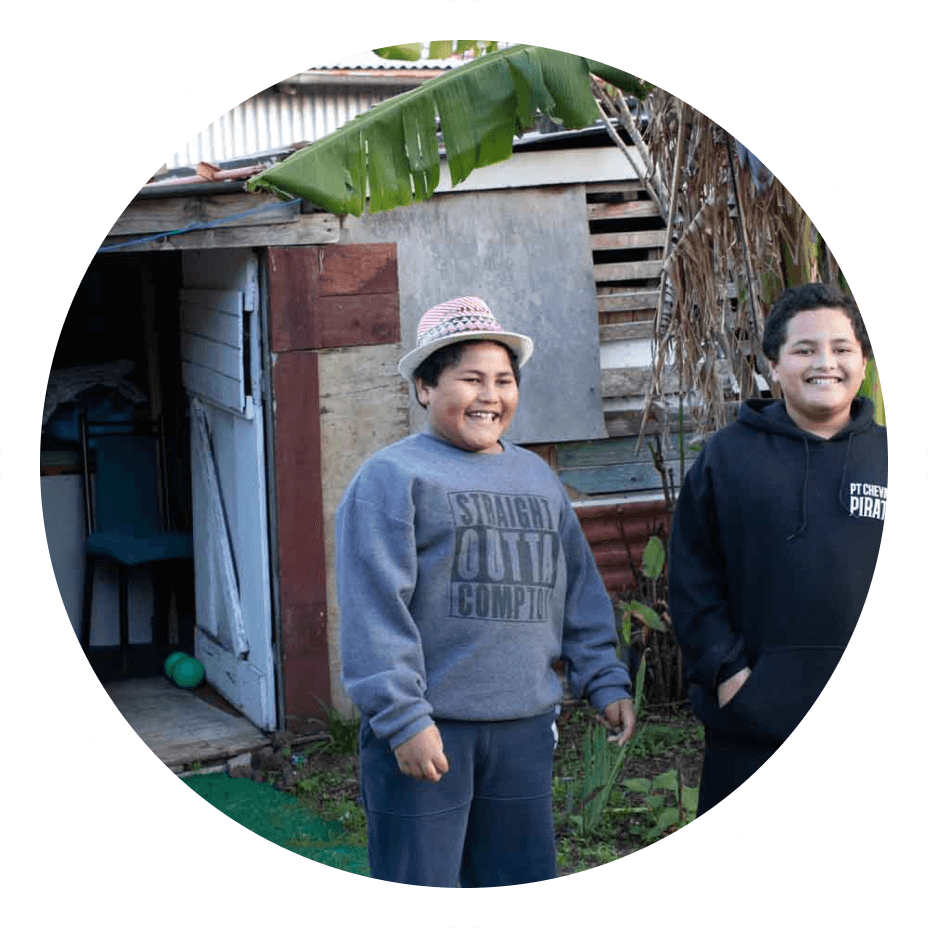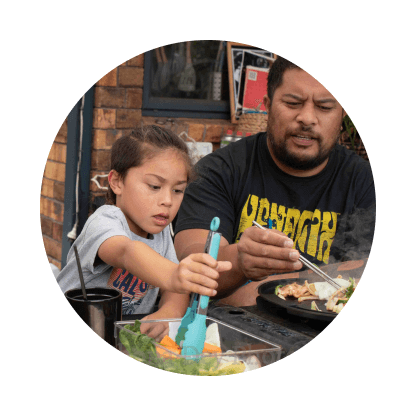Housing and homelessness
Housing profoundly affects young people's health, wellbeing, and development (1). Dampness and mould in housing pose risks for respiratory outcomes such as asthma, allergies, and upper respiratory symptoms (2), with long-term implications into adulthood (1).
Housing stability is also critical for young people. Frequent moves can have detrimental effects (3,4,5), disrupting young people's stability, familiarity, and community connections (6). Families in housing that lack core dimensions of habitability, security of tenure, and privacy and control are described as living in severe housing deprivation or homelessness (7,8).
Disparities in housing quality, safety, and security contribute to persistent inequities in child and youth wellbeing. Policies addressing housing quality and instability are crucial for achieving health equity and are a focus in the Child and Youth Wellbeing Strategy (9).


This report examined the housing conditions, residential mobility and severe housing deprivation experience of the Growing Up in New Zealand cohort between ages 8 and 12.
We also analysed longitudinal patterns of residential mobility from birth to 12-years.

Residential mobility described in this report is the frequency with which young people described they had changed residences since the previous data collection wave.
In Aotearoa New Zealand, those living in severe housing deprivation are measured according to those in the following circumstances: without shelter, in temporary accommodation, sharing accommodation, and in uninhabitable housing.
We analysed the housing conditions, residential mobility and severe housing deprivation experience of the young people at 12-years old based on the questionnaire data collected from their mothers. Our data analyses used frequency statistics and descriptive cross tabulations with sociodemographic variables (ethnicity, housing tenure, neighbourhood deprivation and material hardship). We also assessed the housing quality by geographical region. Finally, we assessed the longitudinal patterns of residential mobility using social sequence analyses.
Insight one
Poorer housing conditions are still a concern for young people living in public housing and private rentals.
During the 12-year Data Collection Waves (DCW), over 70% of young people's homes had insulation both in the ceiling and under the floor, regardless of whether they owned or rented the property. When it came to heating and keeping their home warm in winter, around three in four young people did not face any issues. However, this ratio decreased for those who lived in private rentals, where only two in three young people reported no issues with heating; and for those who lived in public housing, only two in five young people reported no issues.

For those who lived in private rentals:
For those who lived in public housing:
Insight two
Half of the young people moved homes for improvement reasons but one-fifth had moved involuntarily.
About half of the young people moved to a new home with the intention of improving their living conditions, including moving to a larger property 46% of young people had moved homes between 8 and 12-years. About half of them moved to a new home with the intention of improving their living conditions, including moving to a larger property. Practical reasons, such as changes in parental work conditions, contributed to less than one-fifth of the moves.
Of those who moved home:
for improvement moves:
for involuntary moves:
for practical moves:
Insight three
Homelessness and its patterns were found to be related to both public housing tenures and involuntary home moves.
The results found that around 7% of the young people had experienced severe housing deprivation, or homelessness. However, this ratio rose to 1 in 5 for those who lived in public housing, and 1 in 4 for those who moved homes involuntarily.
At 12-years:
7% of all young people in the cohort had experienced homelessness.
22% of those who lived in public housing had experienced homelessness.
24% of those who moved homes involuntarily had experienced homelessness.

Relevance for policy
and practice.


Damp and cold housing conditions are still a concern for young people living in public housing and private rentals.
Our research indicates improvements to housing quality in new tenancies, such as through implementation of the Healthy Homes standards in 2019. However, young people who resided in public housing or private rentals still faced greater difficulties maintaining dryness and warmth than those in family-owned homes. It is important to note that not all private rentals and public rentals are currently subject to these standards, resulting in a substantial proportion of our cohort continuing to experience inadequate housing quality.
Nevertheless, since July 1st, 2019, ceiling and underfloor insulation has become mandatory for all private rentals and public housing. Our report indicates that this has resulted in a similar proportion of insulation across all household tenures.


Involuntary moves are related to inequitable access to housing, unhealthy living conditions, and the potential for homelessness.
Around one-fifth of young people had to move from their previous residences for reasons outside of their control, such as their rental property being sold, parental relationship breakdown, financial difficulties, termination of their tenancy or increased rent. This group was more likely to have lived in public housing or private rentals, experienced homelessness, identified as Māori and/or Pacific, lived in higher levels of material hardship and area deprivation, and had encountered issues with cold and dampness in their previous homes. Our findings demonstrate the importance of recent changes to the Residential Tenancies Act to address residential mobility. These changes included prohibiting landlords from ending a periodic tenancy without a specified reason, increasing the notice periods for a landlord ending a tenancy, and limiting rent increases to once per year. Additional policies or enforcement to reduce involuntary moves may further improve stability of tenancies and provide greater protection for renters in New Zealand.


Further research is necessary to gain a deeper understanding of how young people experience homelessness and their tenancy in public housing.
Severe housing deprivation was experienced by 7.4% of young people in our cohort, highlighting the significant impact of unstable and insecure housing situations on youth wellbeing. Additionally, our research shows that 22% of those who lived in public housing at age 8 still experienced homelessness by age 12. To address this issue, further research is needed to understand the underlying causes of homelessness among young people, particularly in relation to changes in public housing policies and tenures. By identifying the root causes of this problem, policymakers can develop targeted interventions that promote housing stability and reduce the risk of homelessness among youth, including those living in public housing.
References and
research methods
At Growing Up in New Zealand, we're passionate about advancing research and making sure our work is informed by a wide range of sources. That's why we've included a comprehensive list of references, along with an introduction and a detailed report of the research methods used to support the Growing Up in New Zealand study.

Read the full report
We’ve carried out more than 90,000 interviews and collected more than 50 million pieces of data to help inform policy and help give children the best start in life.
Explore other snapshots

%201.svg)



